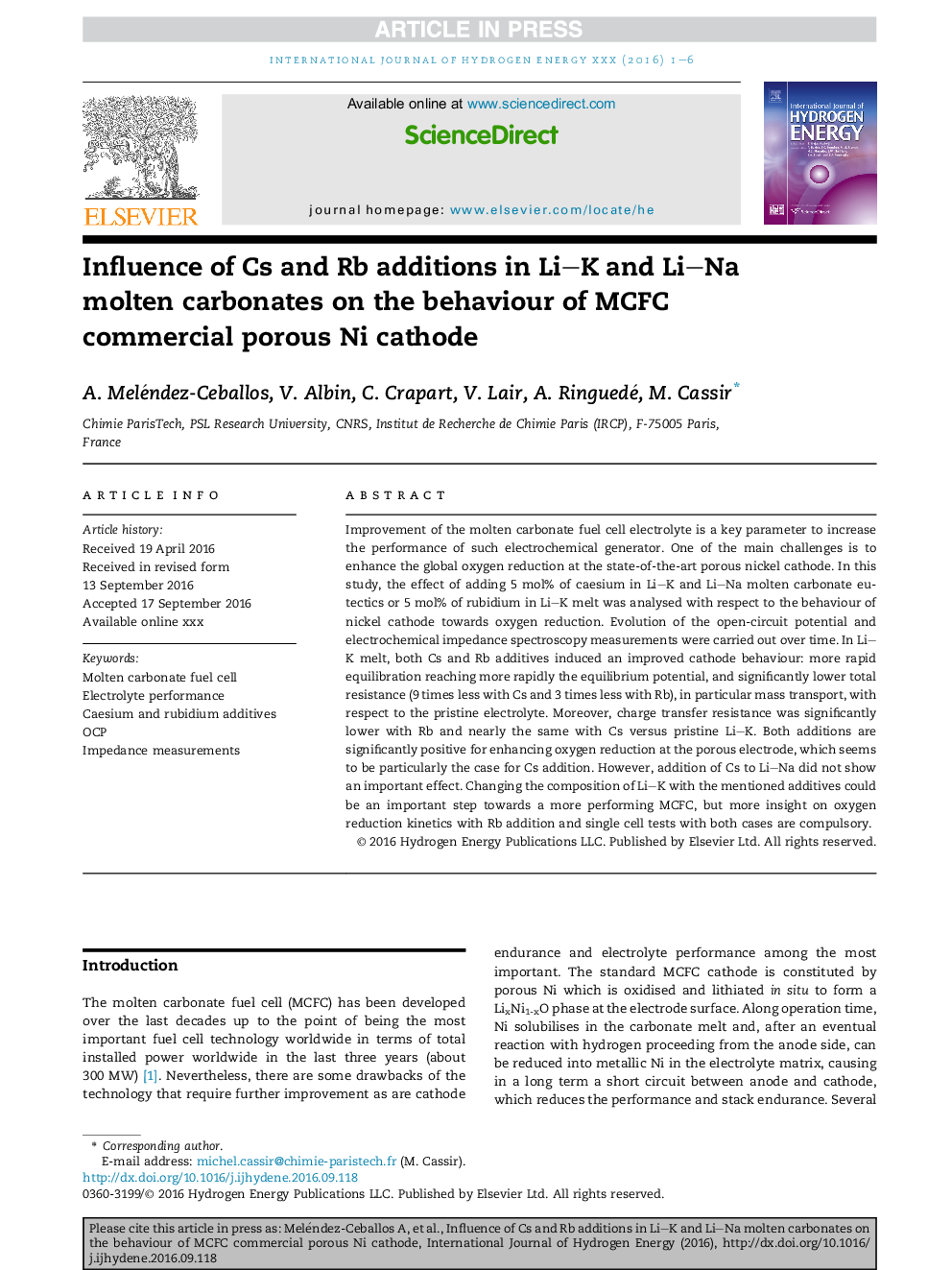| Article ID | Journal | Published Year | Pages | File Type |
|---|---|---|---|---|
| 5146997 | International Journal of Hydrogen Energy | 2017 | 6 Pages |
Abstract
Improvement of the molten carbonate fuel cell electrolyte is a key parameter to increase the performance of such electrochemical generator. One of the main challenges is to enhance the global oxygen reduction at the state-of-the-art porous nickel cathode. In this study, the effect of adding 5Â mol% of caesium in LiK and LiNa molten carbonate eutectics or 5Â mol% of rubidium in LiK melt was analysed with respect to the behaviour of nickel cathode towards oxygen reduction. Evolution of the open-circuit potential and electrochemical impedance spectroscopy measurements were carried out over time. In LiK melt, both Cs and Rb additives induced an improved cathode behaviour: more rapid equilibration reaching more rapidly the equilibrium potential, and significantly lower total resistance (9 times less with Cs and 3 times less with Rb), in particular mass transport, with respect to the pristine electrolyte. Moreover, charge transfer resistance was significantly lower with Rb and nearly the same with Cs versus pristine LiK. Both additions are significantly positive for enhancing oxygen reduction at the porous electrode, which seems to be particularly the case for Cs addition. However, addition of Cs to LiNa did not show an important effect. Changing the composition of LiK with the mentioned additives could be an important step towards a more performing MCFC, but more insight on oxygen reduction kinetics with Rb addition and single cell tests with both cases are compulsory.
Related Topics
Physical Sciences and Engineering
Chemistry
Electrochemistry
Authors
A. Meléndez-Ceballos, V. Albin, C. Crapart, V. Lair, A. Ringuedé, M. Cassir,
